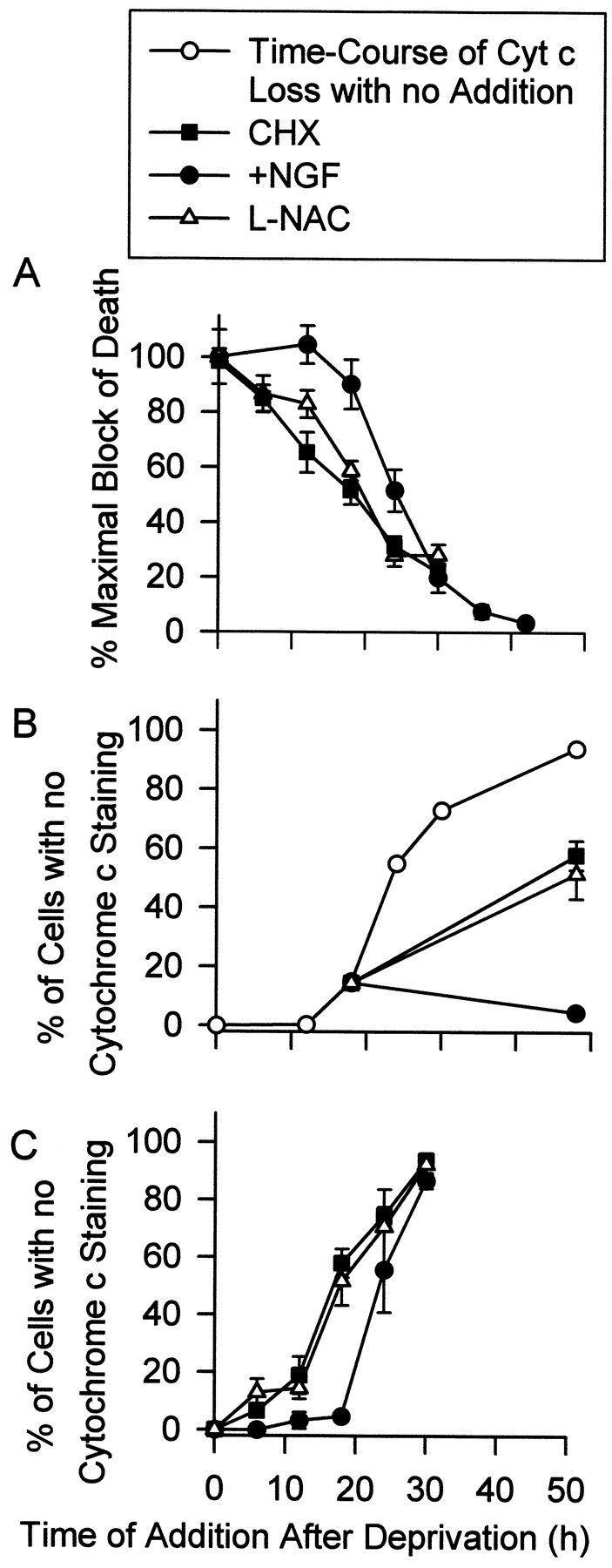Fig. 10.

The late, but not early ROS burst appeared to regulate cytochrome c release. A, The time course of rescue from death induced by NGF deprivation was nearly identical for CHX (1 μg/ml) and l-NAC (30 mm). Either CHX,l-NAC, or NGF were added back to NGF-deprived cultures at the indicated times. Seventy-two hours after the initial withdrawal all media were replaced with NGF-containing medium, and the neurons were allowed to recover for at least 5 d before survival was determined. Data are normalized to the maximal block of death by each agent when it was added at the time of deprivation.n = 9–11 cultures from three separate platings for CHX and l-NAC. The rescue time course for NGF was similar to that reported by Deckwerth and Johnson (1993) for these cells and was, therefore, repeated only once. n = 3–16 cultures for each time point. B, Addition of NGF, but not CHX (1 μg/ml) or l-NAC (30 mm), to NGF-deprived cells immediately blocked cytochrome c release. Cultures were deprived of NGF and maintained in BAF (30 μm)-containing medium for 18 hr. At this time, medium containing BAF and either CHX, l-NAC, or NGF was added to the cultures. Forty-eight hours after the initial withdrawal, cultures were immunostained, and percentage of cells exhibiting complete loss of cytochrome c was determined as in Figure 4. The time course of complete loss of cytochrome c in BAF-saved, NGF-deprived neurons (open circles) was taken from Figure 4B.C, Time courses of the abilities of l-NAC (30 mm) and CHX (1 μg/ml) to block cytochrome c release were nearly identical. Data were obtained as in B except for the varying durations of deprivation before treatment with the agents. n = 101–159 neurons from three separate platings for B and C. Legend attop applies to A–C.
